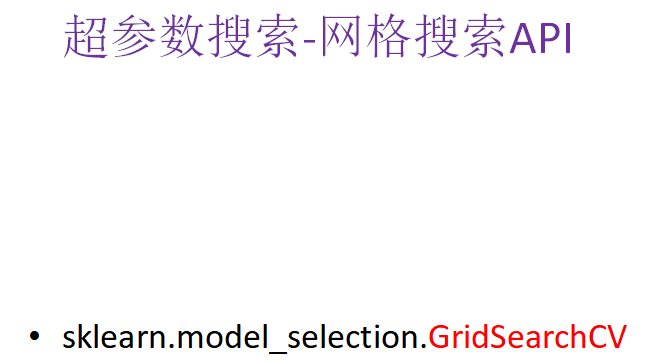模型訓練與優化
阿新 • • 發佈:2019-01-29
特征 cor 搜索 grid precision from 檢驗 結果 name
數據集拆分
from sklearn.model_selection import train_test_split # 分割數據集到訓練集和測試集 # lb.data 特征值 # lb.target 目標值 # test_size=0.25 75%數據訓練 25%數據測試 # 返回 訓練特征值, 測試特征值, 訓練目標值, 測試目標值 x_train, x_test, y_train, y_test = train_test_split(lb.data, lb.target, test_size=0.25)
交叉驗證
from sklearn.model_selection import cross_val_score clf = svm.SVC(kernel=‘linear‘, C=1) # cif 估計器對象 # iris.data:特征數據 # iris.target:目標值 # cv=5 5次交叉驗證 scores = cross_val_score(clf, iris.data, iris.target, cv=5) print(scores) # 結果 array([ 0.96..., 1\. ..., 0.96..., 0.96..., 1\. ])
網格搜索
通常情況下,有很多參數是需要手動指定的(如k-近鄰算法中的K值), 這種叫超參數。但是手動過程繁雜,所以需要對模型預設幾種超參數組 合。每組超參數都采用交叉驗證來進行評估。最後選出最優參數組合建 立模型。


from sklearn.model_selection import GridSearchCV
param = {"n_estimators": [120, 200, 300, 500, 800, 1200], "max_depth": [5, 8, 15, 25, 30]}
# 網格搜索與交叉驗證
# rf:估計器對象
# cv=2:指定幾折交叉驗證
gc = GridSearchCV(rf, param_grid=param, cv=2)
gc.fit(x_train, y_train)
print("準確率:", gc.score(x_test, y_test))
print("查看選擇的參數模型:", gc.best_params_) 精確率(Precision)與召回率(Recall)


from sklearn.metrics import classification_report # 返回召回率 # labels:目標值 # target_names:目標值對應的名稱 classification_report(y_test, y_predict, labels=[2, 4], target_names=["良性", "惡性"])
模型訓練與優化
